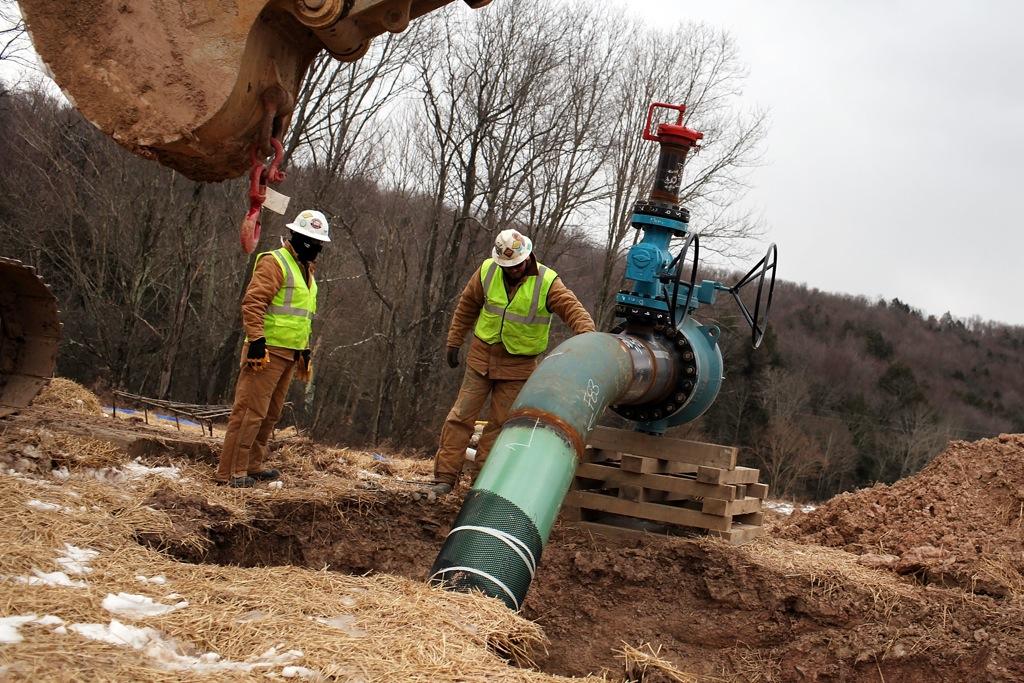5 fracking facts that are beyond question
What the frack is up with this fracking business?
The debate over the safety of fracking reached a new, bizarre dimension last night, when the AP published a story with the headline, "Experts: Some fracking critics use bad science."
We've tried to remain objective on the subject of fracking, so it was hard not to be baffled by this: How do we know the "critics" aren't experts, and how do we know the "experts" aren't also using bad science?
At our wits end, we reached out to Dr. Steven Marshak at the University of Illinois to help lay out for us once and for all what we know and do not know about fracking.
Why Dr. Marshak? First, he's an expert in structural geology — a subject on which all energy industry scientists must know chapter and verse. He also writes geology textbooks.
We also wanted to speak with him precisely because he does not research the effects of fracking, and thus would not provoke the suspicion of you guys that he somehow had a hidden agenda or had been bought off by either side of the debate. Plus he's in Illinois, a state that relies on coal and nuclear for much of its energy.
To review, hydrofracking (which comes from the phrase "hydraulic fracturing") involves pumping water, sand and a viscous fluid down into shale rock to create fissures that release hydrocarbons, which are then pumped to the surface.
Here are the five settled facts on fracking:
- There's definitely some weird stuff in fracking fluid
- "What is in these fracking fluids? Probably organic chemicals like diesel fuel, antifreeze, soap, things designed to make [the fluid] slipperier. "These things are not things you want to be dumping into drinking water."
- "What is in these fracking fluids? Probably organic chemicals like diesel fuel, antifreeze, soap, things designed to make [the fluid] slipperier. "These things are not things you want to be dumping into drinking water."
- But as long as it's done deep enough, the fracking process should not affect sources of drinking water
- "The layer of black shale is down in the subsurface several thousand feet. If you can drill down to that level, the hydrofracturing cracks do not extend more than 1000 feet or so; the ends of the cracks are still going to be several thousand feet below the surface [where wells and aquifers sit]."
- "The layer of black shale is down in the subsurface several thousand feet. If you can drill down to that level, the hydrofracturing cracks do not extend more than 1000 feet or so; the ends of the cracks are still going to be several thousand feet below the surface [where wells and aquifers sit]."
- Natural gas can leak up to the surface, but it's often the result of natural processes
- "The image of turning on a water faucet and having natural gas leak out, in general those are situations where they have sunk their well into a sandstone that has already filled with gas; that gas is naturally accumulating."
- "The image of turning on a water faucet and having natural gas leak out, in general those are situations where they have sunk their well into a sandstone that has already filled with gas; that gas is naturally accumulating."
- But a lot can still go wrong with the fracking process
- "There are some real problems. If the shale horizon is too close to surface … it probably shouldn't be hydrofracked so you avoid contaminating water. You also need to make sure you're inspecting well sites, that you don't have middle of night dumping of excess fluid into streams, that retention pits are properly sealed." The process also does cause measurable but small earthquakes, he said.
- "There are some real problems. If the shale horizon is too close to surface … it probably shouldn't be hydrofracked so you avoid contaminating water. You also need to make sure you're inspecting well sites, that you don't have middle of night dumping of excess fluid into streams, that retention pits are properly sealed." The process also does cause measurable but small earthquakes, he said.
- Bottom line: similar to off-shore drilling for oil, it's possible for something to go wrong, but it's not inherently unsafe. The debate needs to catch up with this reality.
- "It's worth looking more closely at it. My sense is, you end up with two sides that are pretty far apart and not really listening to each other. The public is overreacting to certain things, but there are other things the industry is underplaying."
More from our partners at Business Insider:
Business Insider: A Full Rundown of Russia's Military Acquisitions
Business Insider: Guess Which Group of Americans Hates Obama the Most
Business Insider: 7 Fascinating Facts About Six Flags
Business Insider: An Awesome Breakdown of the Markets and the Economy
Business Insider: One State Has the Fastest and Slowest Growing Citites in America
